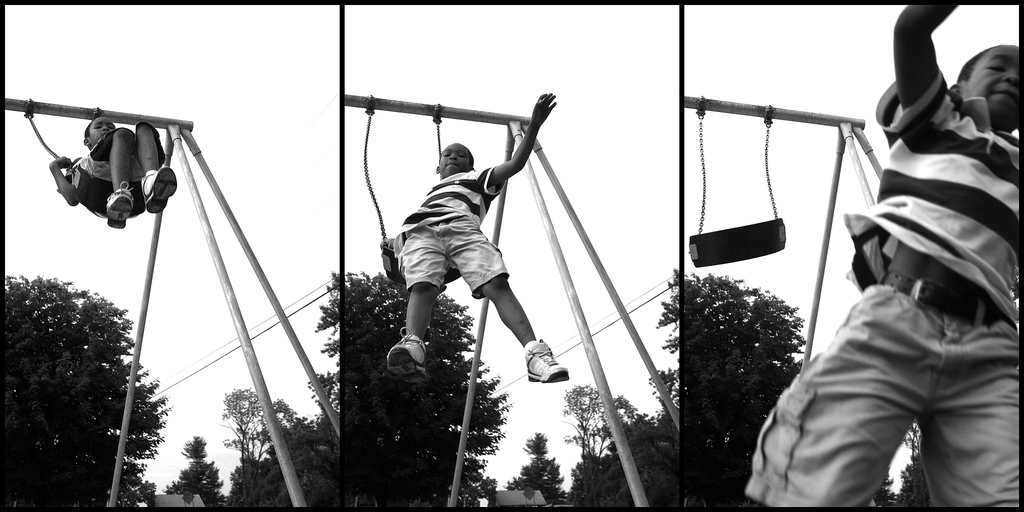Have you ever told your child not to touch the [plants, vase, dog, fragile thing, public toilet] but they go and touch it anyway?
And–to make you feel even more exasperated–all the while, they have a mischievous smile on their face?!
It’s so frustrating!
But this challenging behavior can also easily be addressed if we can understand what is going on for the child.
It all starts with looking underneath the behavior.
Here’s how to look underneath the behavior.
A mom sent us this situation…
What is my child doing?
A boy, almost 6 years old. He is displaying very challenging and defiant behavior. If we tell him not to touch something fragile because it might get damaged, he will do it… because it seems fun to him to do so. It’s like a game.What is he feeling?
He’s feeling playful, joyful, and maybe bored.What does he need?
He is seeking connection by trying to be playful in a non-playful situation. He also needs autonomy.What am I feeling?
Frustration and desperation because I know he understands that some things can’t be done, but he will do it anyway out of playfulness. I feel frustrated because I need to negotiate with him all the time. I feel tired and worried when we are around other people who might be judging him, me and my partner.What needs of mine are not being met?
Need of order and politeness, need of self-discipline, teamwork, and cooperation.
First of all, I’d like to say to this mom… “It makes sense that you’re feeling frustrated, tired, irritated, and exasperated. You’ve explained to your son not to touch. You know he understands. And yet, he keeps on doing it. Plus, you don’t want to get judged by other people.”
So what’s the next step?
Looking Underneath the Behavior
Before we talk about win-win solutions, let’s look underneath this behavior–a child touching something fragile that he knows not to touch. This mom already understands that her son is feeling playful, joyful, and that he is seeking connection.
Does this child need a lecture? No. He already knows not to touch the fragile thing.
Does this child need a punishment or timeout? No. That would most likely just frustrate him and distract him from learning that there are more effective ways to get connection and attention than touching fragile things.
Does this child need some role modeling and teaching? Yes! That’s the best way for him to learn how to get the connection that he wants.
Win-Win Solutions
What we like to talk about at Happily Family is coming up with win-win solutions, which basically means that you and your child work together to come up with a strategy that meets your needs and theirs too!
Collaborating with your child might seem like a hassle or just plain inefficient, but there are a lot of benefits to this parenting approach, according to the research. Win-win solutions build your child’s problem-solving, relationship, and communication skills, for the short–and long– term.
The first step of a win-win solution is to really understand what is going on for your child, fully listen to them, and give them some empathy (which you can do, even if you disagree with how your child has acted!).
Use Conversation to Fully Understand Your Child
Talk to your son about how to get the attention that he wants AND keep fragile things safe.
Here are some possibilities of what you can say:
“It looks like you want to play. These fragile things are not for playing. What things could you play with right now?”
-OR-
“What could we do so that these things stay safe, and you also have something to play with?”
-OR-
“I’ll move these things out of reach so that it’ll be easier to remember not to touch them. What do you want to play with instead?”
See what ideas your child has. Some of them might be quite creative. Asking them for their ideas builds their problem solving skills and it increases the likelihood that they will follow through with the solution.
Whatever strategy you choose, sometimes it’s helpful to write it down or draw it so both of you have a clear understanding of the new idea.
There are some pitfalls of Win-Win Solutions. Here’s how to avoid them…
What if your child doesn’t have any ideas on how to solve the problem?
Sometimes kids can’t think of any ideas, if so, you can offer some of your own. Think of things that might still help him feel connected, but that will also keep the fragile things safe.
“You can sit quietly in my lap and look at a book.”
“You can help me ____ .”
“We can play X, Y, or Z together. How about that?”
What if none of your child’s solutions work for you?
Your child might think of a solution that is unrealistic, unreasonable, impractical, or too time intensive.
If that’s the case, here are some things you could say…
- Express your concern “I’d like to say ‘yes’ to that but here’s what is holding me back…”
- Empathize “I understand that you want to play XX right now. You feel sad that I’m not available and you don’t want to play with anyone else. This is a tough problem.”
- Offer an alternative “I’m willing to play with you, but I’m only available for XX minutes. How does that sound?”
What if you don’t have any other options?
Sometimes as a parent, you will find yourself in tough situations with limited time, energy or options. Sometimes it’s next to impossible to meet your needs and your child’s needs at the same time.
If you’ve been in a situation where you couldn’t figure out how to meet your needs and your child’s at the same time, leave it in the comments section below.
We’ll talk about “what to do when you have no choice” in the next blog post.
Check In and See How It’s Working
After a period of time–maybe just a few minutes–come back and talk about how this strategy is working (or not working) for you and your child. You’ll know pretty quickly if it’s working because your child will no longer be interested in touching the fragile thing.
Remember, the goal is to be working together.
If needed, brainstorm a different strategy. And try again!
Ultimately, whether you use the steps outlined above or not, I hope that you’re able to follow your own parenting instincts, strengthen your relationship with your child, and figure out a solution that works for both of you.
If, after reading the blog today, you’re interested in stuff like this WITH me… here’s how you join the Village.
You and I can personally talk in there if you’re struggling to figure out how to talk to your child.










Thank you for answering to my daily struggles! I have just read the post and I’ll try some strategies explained. Something else that I mentioned but was not addressed is about saying/ doing inappropriate things to people out of playfulness. He just does NOT understand that it is not funny and others don’t like it! It’s hard for me to figure out what he’s seeking out of doing that…
Marion, great question. I’ve helped kids in that situation too–my own kids and as a teacher. When a child is trying to be playful and it isn’t having the result that they intended then I coach/teach them socially-appropriate ways to connect/be funny/be included. You can use these same steps to understand what is happening underneath your child’s behavior. For example,. a child is going around poking other kids because he wants them to play with him. So then I teach him to say, “Do you want to play xyz with me?” instead of poking them.